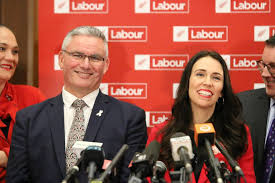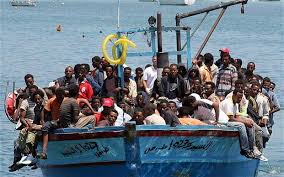
The Labour Party under Jacinda Ardern won an extra ten percent of voters compared to the previous election. In 2014, under David Cunliffe, they won a paltry 25.1% of the total vote, but in yesterday’s election they won 35.8% (specials are yet to be counted but shouldn’t affect Labour’s vote percentage much). This article, by Understanding New Zealand author Dan McGlashan, looks at where they won these new voters from.
In the broadest and crudest sense, the Labour Party won a lot of support back from middle-class, middle-aged to elderly white people who had previously voted National, and from Maoris who had previously voted New Zealand First.
The correlation between voting Labour in 2014 and being a Kiwi of European descent was -0.76, but by 2017 this correlation had weakened to -0.56. This shift from negative to positive was replicated by the correlation between being Maori and voting Labour, which was 0.42 in 2014 and which had strengthened to 0.57 by 2017.
Taken together, these statistics suggest that Labour strengthened their position among the New Zealand-born. Indeed, we can see that the correlation between being born in New Zealand and voting Labour in 2014 was not significant at 0.01, but it had grown sharply to a mildly significant 0.30 by 2017.
This was met by corresponding drops in support from demographics who have a high proportion of immigrants. The correlation between being born in the Pacific Islands and voting Labour was 0.68 in 2014, and this fell to 0.43 in 2017, and also the correlation between born in North East Asia became more strongly negative, from -0.17 in 2014 to -0.35 in 2017.
These can be explained by the fact that some Pacific Islanders have been here long enough now to become part of the middle class. Conservative religious sentiments might have pushed some to National as well. Likewise, many of the Asian immigrants who have arrived recently are the moneyed classes looking to shift capital from Asia, and are different to the younger, educated Asian immigrant that Labour tended to let in.
There was already a notable gender gap when it came to supporting one of the two major parties. The correlation between being female and voting Labour in 2014 was already 0.31, but by 2017 this had strengthened to 0.40. There was also a very large reduction in the strength of the correlation between working part time and voting Labour. This was -0.65 in 2014 and -0.40 in 2017.
The Labour vote was also a fair bit older in 2017.
The correlation between being in the 20-29 age bracket and voting Labour in 2014 was 0.32, and this had fallen to 0.13 by 2017. Many of these people would have been young students who were persuaded to vote for The Opportunities Party.
The correlations for older age groups, on the other hand, became less strongly negative. The 50-64 age bracket had a correlation of -0.68 with voting Labour in 2014, but this had fallen to -0.59 by 2017. Likewise, the 65+ age bracket had a correlation of -0.58 with voting Labour in 2014, and this fell to -0.51 by 2017.
An interesting point here is that the correlation with being born in Britain in 2014 (-0.73) remained equally as strongly negative in 2017. So this tells us that a much greater proportion of this middle-aged to elderly group that switched from National to Labour were people with family in New Zealand, probably therefore grandchildren.
It might be that these people, having observed the sharper effects of neoliberalism on their wider family, no longer felt motivated to support it in the same way they did in 2014. After all, it was mostly this same group of people who made the most cash out of National’s immigration policies.
Further clues come from the patterns of voters based on their industry. Some industries shifted sharply towards Labour in 2017. Most notable were healthcare and social assistance (which had a correlation of -0.00 with voting Labour in 2014 compared to 0.20 in 2017) and education and training (which had a correlation of -0.01 with voting Labour in 2014 compared to 0.17 in 2017). Also notable is that the occupation of community and personal services workers had a correlation of 0.20 with voting Labour in 2014, increasing to one of 0.36 in 2017.
What this might suggest is that Kiwis whose jobs put them into contact with other people were the most likely to switch from National to Labour.
It could be that the type of Kiwi who is an everyday grandparent, and who has taken on a social conscience in their semi-retirement, has switched some of their sentiments away from National because of a lack of confidence in the belief that they would leave a good New Zealand to their grandchildren.
Looking at the statistics of the income bands, we can see that Labour’s surge won it back much of the middle ground. Although Kiwis with an annual income of less than $15K continued to overwhelmingly favour Labour, there was a swing towards them in the income bands of those groups in the centre.
The correlation between having a personal income of $15-20K and voting Labour rose to 0.13 in 2017 from -0.05 in 2014, and the correlation between having a personal income of $20-25K and voting Labour rose to 0.10 in 2017 from -0.09 in 2014. Even though these income bands are the common student ones, it was not there that the gains were made – the correlation between being on the student allowance and voting Labour in 2017 was, at 0.32, weaker than it had been in 2014 (0.34).
Taking into account the big Labour gains among part-time workers, what all this suggests is that a middle-class, elderly group of voters, probably with wider community ties and a stronger historical sense of what the country used to be like, have come to feel that Kiwi values are no longer represented by the direction the country is taking.
It’s important not to overplay this – the bulk of wealthy, older, white voters still went with National – but there is a clear trend evident. The electorate is simply not as convinced that the country is going in the right direction anymore, and the centre is starting to shift towards Labour.
*
This article is an excerpt from the 2nd Edition of Understanding New Zealand, which Dan McGlashan and VJM Publishing will have ready for sale at the end of October 2017. This will contain statistics calculated according to the official final vote counts and will be freshly updated with data from the 2017 General Election.



